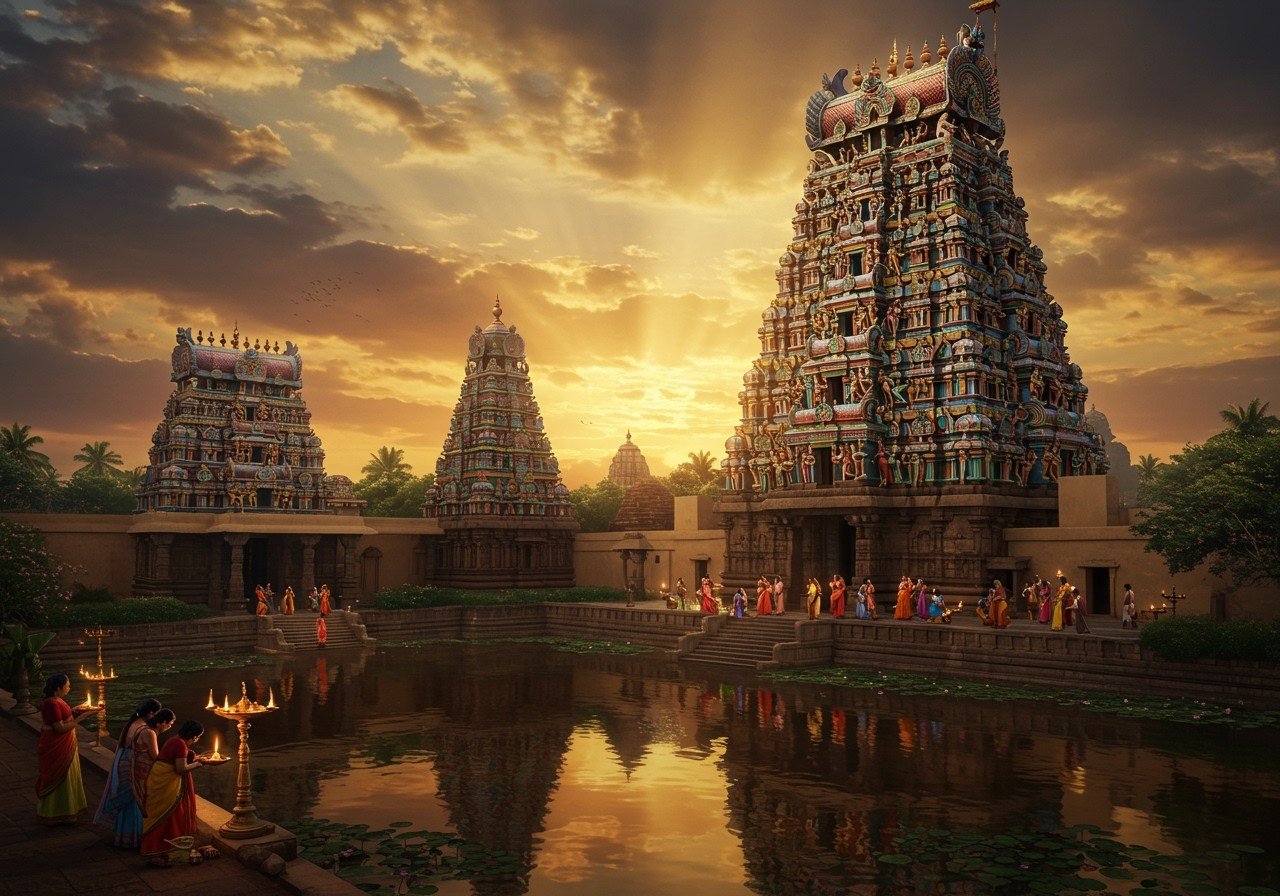
The Pandya Dynasty, a prominent Tamil dynasty in South India, left an indelible mark on the region’s art and architecture, particularly through their magnificent temples. These structures, with their intricate designs and monumental artistry, reflect the dynasty’s deep religious and social ethos. Exploring these architectural wonders offers insights into the historical significance and unique features that distinguish Pandya temples.
Historical Context of the Pandya Dynasty
The Pandya Dynasty thrived between the 4th century BCE and the 16th century CE in the Tamil region of South India. This dynasty played a vital role in nurturing art, culture, and religion, significantly influencing South Indian architecture. Key rulers like Nedunjeliyan and Maravarman Sundara Pandyan actively supported temple construction, enriching the region’s cultural landscape. Political and cultural interactions with neighboring kingdoms further enhanced their architectural pursuits.
Defining Features of Pandya Dynasty Architecture
Pandya temples are celebrated for their towering vimanas (temple towers) and the use of granite and other locally sourced materials. The elaborate carvings and sculptures adorning the temple’s exterior and interior are truly remarkable. Mandapas (pillared halls) and gopurams (gateway towers) are essential elements in their design. The emphasis on symmetry and geometric precision is evident in their layouts, and the incorporation of water bodies like tanks and wells within the temple complexes adds to their distinctive character.
Iconic Pandya Temples
Several temples constructed by the Pandya Dynasty stand as testaments to their architectural brilliance:
- Meenakshi Amman Temple, Madurai: Renowned for its elaborate gopurams and vibrant sculptures.
- Nellaiappar Temple, Tirunelveli: Famous for its musical pillars and expansive courtyards.
- Koodal Azhagar Temple: Recognized for its layered vimana and celestial carvings.
These temples hold a significant role in regional festivals and pilgrimages, underscoring their cultural importance. Other notable examples of Pandya architecture can be found in Thirupparankundram, Anaimalai, Karaikudi, Kalugumalai, Malaiyadikurichi, and Trichy, showcasing both rock-cut and structural temples. The massive entrance gateways, or gopurams, became a hallmark of South Indian temple architecture, reflecting the Pandya’s distinctive style.
Sculpture and Artistic Contributions
Pandya sculptures depict deities, mythological scenes, and everyday life with remarkable detail and artistry. Techniques like high-relief and low-relief carvings are prevalent. Iconic sculptures include celestial dancers and divine guardians. Influences from Jain and Buddhist art are evident in Pandya sculptures, demonstrating a fusion of artistic traditions. Guilds and artisan communities played a crucial role in creating these masterpieces.
Preservation and Legacy
Preserving Pandya temples presents challenges due to environmental factors and human activities. The Archaeological Survey of India (ASI) and other heritage organizations are instrumental in conservation efforts. Community involvement is essential for safeguarding these cultural landmarks. Modern-day festivals and rituals keep the Pandya legacy alive.
Enhance Your Spiritual Journey with Poojn.in
Inspired by the rich heritage of Pandya temples? Bring a touch of sacred artistry into your home with Poojn.in’s exquisite collection of divine idols. We offer:
- Exquisite Marble Radha Krishna Idols: Beautiful 14-inch Radha Krishna Bigraha crafted from pure marble dust, perfect for creating a serene atmosphere of devotion in your home. These meticulously crafted murtis capture the divine essence of the deities, adding a touch of spiritual grace to your puja room or living space.
- Elegant Marble Laxmi Ganesh Murtis: 10-cm Marble Dust Laxmi Ganesh Murti, ideal for invoking blessings of prosperity and wisdom. These intricately designed murtis bring a sense of traditional artistry to your home, radiating positive energy and creating a sacred focal point for your daily prayers.
Also, explore insightful articles on South Indian temple architecture and pilgrimage planning on our blog:
- South Indian Temple Architecture: A Sacred Journey
- Pilgrimage Planning: Your Guide to a Meaningful Journey
Conclusion
The architectural marvels of the Pandya Dynasty provide a captivating glimpse into the rich cultural and religious tapestry of South India. Their temples, distinguished by towering vimanas, intricate carvings, and majestic gopurams, showcase a harmonious blend of artistic traditions and meticulous craftsmanship. The legacy of the Pandya rulers, who were ardent patrons of art and architecture, endures through these magnificent structures. As we explore iconic temples like Meenakshi Amman, Nellaiappar, and Koodal Azhagar, we not only appreciate their architectural grandeur but also recognize their enduring cultural significance. These temples continue to serve as vital centers of worship, community gatherings, and festivals, keeping the Pandya legacy vibrant and alive. Preserving these historical treasures is of paramount importance. The dedicated efforts of organizations like the Archaeological Survey of India (ASI), along with active community involvement, play a crucial role in safeguarding these monuments for generations to come. The Pandya Dynasty’s contributions to South Indian architecture remain a testament to their devotion, artistry, and vision, inspiring awe and reverence even today.


